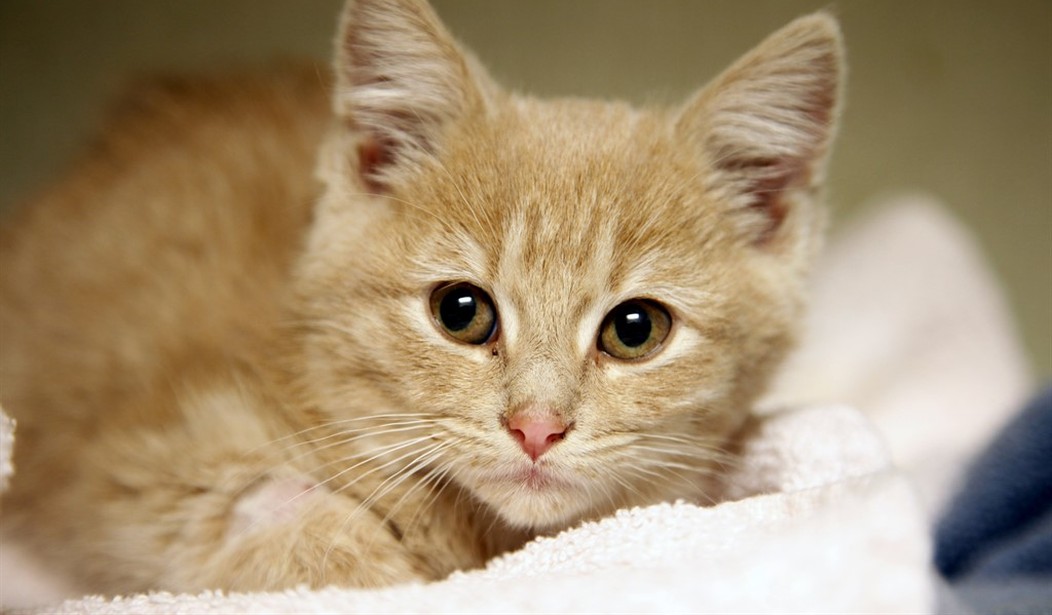There's very little middle ground when it comes to the question of loving or hating cats. As a cat lover, I know that this particular post will reap comments from the haters, the lovers, and the fanatics.
God luv'em all.
Let's put aside what we think about cats as animal companions and examine the species from the point of view of how they view the world we both live in.
Cats and dogs are both special in that they have extraordinary senses. Dogs have their own astonishing physical gifts of sight, smell, and hearing.
Cats, however, beat dogs six ways from Sunday when it comes to the sensitivity of the senses. That's not opinion. That's a measurable scientific fact.
Don't get me wrong. Dogs are beautiful, extremely intelligent, loyal, fun-loving, and super-obedient. Cats are gorgeous, only as smart as they have to be to get what they want, and as loyal as where their previous meal came from. They would rather play with other cats than you, and look at you with the most baleful glances if you order them to do something.
We love them not because they're so tame and docile but because they aren't very far removed from the jungle. It's their wildness that attracts many of us. Like, when a cat is sitting in the family room and looking at you with those cat's eyes, what do you suppose he's thinking?
Lunch!
Cats have been trained to do stupid dog tricks but they'd rather not, thank you. Maybe it's the way they see, hear, smell, and touch the world around them that differentiates them from dogs — and us.
Cat's eyes are a study in contrasts. They see unbelievably well in low light but are colorblind. Their visual acuity is the result of millions of years of evolution, which has given them far better peripheral vision than us.
Light enters the eye through the cornea, the round, transparent surface of the cat’s eye. The cornea focuses light on the retina, which lines the back of the eye on the inside. A cat’s cornea is large and dome-shaped, letting cat eyes gather the maximum number of photons—a key adaptation to their low-light living. Cat pupils are long and vertical, narrowing to a slit in broad daylight but expanding up to 300-fold when it’s darker (human pupils grow only 15 times bigger).
Dogs have very good vision during the day but are as blind as us at night.
It's in the world of sound that cats shine the brightest. Their ears are like mini-satellite dishes that can independently rotate forward, backward, and sideways to zero in on a sound’s location. They can hear the rustle of a field mouse in the grass from 15 feet away and pinpoint the location to within inches.
They can also distinguish extremely subtle differences in sounds, even as little as one-tenth of a tone. But their ultrasonic hearing (far superior to humans and even dogs) doesn’t mean that Beyoncé and Beethoven are to a cat’s musical tastes. In 2015, a research team from two U.S. universities tested tunes incorporating feline-centric sounds that included purring and a pulse reminiscent of suckling. The results showed that cats preferred the cat songs (“Cozmo’s Air” and “Rusty’s Ballad”) to music composed for people.
Sorry, pooches. You got great hearing, but cats rule and dogs drool when it comes to hearing.
But dogs have it all over cats when it comes to the sense of smell. "Scientists report that a dog's sense of smell is 10,000 to 100,000 more acute than a human's."
Experts believe that a cat’s sense of smell is about 14 times better than ours. A domestic cat’s olfactory epithelium— the specialized tissue in the nose containing the receptors that detect odors—is five to 10 times larger than a human’s. As a result, cats have up to 200 million specialized cells that detect smells, compared with our mere five million.
When it comes to the sense of "touch," both animals have different ways of feeling the world. Dogs' sense of touch is not even as good as a human's tactile sense. It "feels" primarily through its lips and mouth.
A cat's whiskers, on the other hand, are extremely sensitive and as sensitive as a human's fingertips.
Known formally as a vibrissa, a whisker is longer and thicker than normal cat hair. Each of a feline’s whiskers grows from a follicle packed with nerves and blood vessels, making them as sensitive as human fingertips. These vibrissae help to compensate for a cat’s less-than-stellar close vision. They detect subtle air movements that can indicate the presence of prey and help cats navigate around obstacles.
A cat's mysterious ways are partly due to their superior senses. They seem to be on another plane of existence at times when they anticipate our needs. They are so finely attuned to our moods that they can "sense" when we're down or want to be left alone.
Cats are magical. No wonder their senses are magical too.










